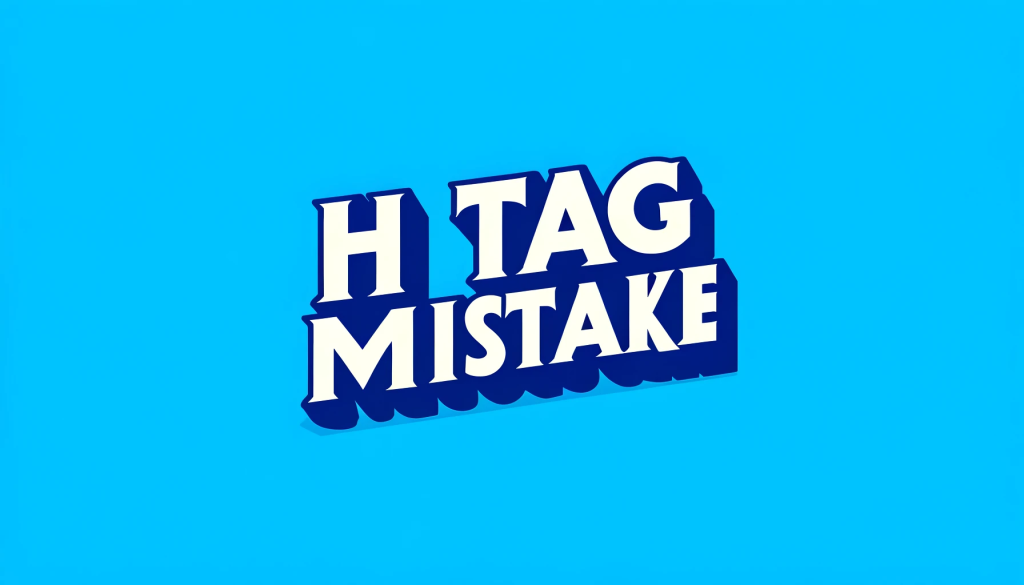In the ever-evolving world of SEO, on-page optimisation remains a cornerstone for ranking success. Within that realm, header tags, often called H-tags, play a crucial role in structuring your content for search engines and human readers.

This comprehensive guide delves into the mastery of header tags, equipping you with the knowledge and best practices to leverage them for optimal SEO benefits. Whether you’re a SEO professional or just starting out, this guide will provide valuable insights to elevate your content strategy.
Understanding Header Tags
What Are Header Tags?
Header tags, commonly known as H-tags, are HTML elements that designate headings and subheadings within your content. They are categorised from H1, which denotes the most important heading, to H6, the least important.
H-tags act as a hierarchical outline for your web page, similar to headings in a book. They visually segment your content, making it easier for users to scan and navigate. But their significance extends far beyond aesthetics. Search engines like Google heavily rely on H-tags to understand the content structure and thematic flow of your page.
Here’s a breakdown of the power H-tags wield:
- Improved Readability: Clear and concise H-tags break down complex topics into digestible chunks, enhancing the user experience. Readers can quickly grasp the main points and identify sections relevant to their interests.
- Enhanced SEO Performance: Search engines utilise H-tags to comprehend your content’s core message and hierarchy. Properly structured H-tags with relevant keywords signal topical relevance, potentially boosting your ranking for targeted search queries.
- Increased User Engagement: Well-crafted H-tags pique curiosity and encourage users to delve deeper into specific sections of your content. This can lead to more time spent on a page, a crucial ranking factor.
Best Practices for Using Header Tags
H1 Tags: Setting the Stage
The H1 tag is arguably the most critical header tag because it serves as the main title of your page. Here’s how to optimise your H1 tags effectively:
- Ensure uniqueness: Each page should have a unique H1 tag that describes the page content accurately.
- Incorporate primary keywords: Include your main keyword in the H1 tag, but ensure it fits naturally within the title.
- Keep it concise: A precise and clear H1 tag is more effective than a lengthy and vague one.
H2 and H3 Tags: Structuring Content
H2 and H3 tags are essential for breaking down content into manageable sections that are easy to digest. Use these tags to:
- Highlight subtopics: Use H2 tags for main subheadings and H3 tags for additional subdivisions if needed.
- Include secondary keywords: Where appropriate, integrate secondary keywords in H2 and H3 tags to enhance SEO.
- Maintain a logical flow: Ensure that your header tags follow a logical order that guides the reader naturally through the content.
H4 to H6 Tags: The Fine Details
While not as crucial as H1 to H3, H4 to H6 tags are useful for organising detailed points within sections. Utilise these tags to:
- Organise sub-details: Use these tags for further breakdowns within sections when necessary.
- Improve readability: Even deeper levels of content should be accessible and easy to navigate.
- Avoid overuse: Only use these tags when truly necessary to avoid diluting the structure of your content.
Pro Tip: Maintain a logical hierarchy. Don’t jump from H1 directly to H4, for example. Ensure a smooth progression from H1 to H2, H2 to H3, and so on.
Crafting Compelling and SEO-Friendly H-Tags
Now that you understand the H-tag hierarchy, let’s delve into crafting effective H-tags:
- Clarity and Concision: Strive for H-tags that are clear, concise, and easy to understand. Aim to capture the essence of the following content within a few words.
- Keyword Integration: Strategically incorporate relevant keywords throughout your H-tags, particularly in your H1 and H2 tags. However, prioritise user readability – keyword stuffing is a red flag for search engines.
- Benefit-Oriented Approach: Consider the user’s perspective. Frame your H-tags to highlight the benefits or value users will gain from reading that specific section.
- Intrigue and Curiosity: Don’t be afraid to spark interest with your H-tags. Use questions or intriguing statements to entice users to delve deeper.
- Consistent Formatting: Maintain consistency in your H-tag formatting (uppercase, lowercase, sentence case, etc.) across your entire website.
Common H-Tag Mistakes and How to Avoid Them

Even experienced SEO professionals can fall prey to H-tag blunders. Here are some common mistakes to steer clear of:
- Duplicate H1 Tags: Every page deserves a unique H1 tag. Having multiple H1s confuses search engines and dilutes your focus keyword.
- Keyword Stuffing (Continued): harming your ranking. Prioritise natural keyword integration that enhances readability.
- Neglecting H-Tags: Skipping H-tags entirely not only hinders SEO but also creates a dense, user-unfriendly experience.
- H-Tag Hierarchy Mismanagement: Jumping between H-tag levels disrupts the logical flow of your content. Maintain a clear structure (H1 -> H2 -> H3, etc.).
- Overusing Lower-Level H-Tags (H4-H6): Excessive segmentation with H4-H6 tags can make your content appear overly complex. Utilise them strategically for intricate topics only.
- H1 Tag Placement: The H1 tag should ideally be positioned near the top of your content, not buried within paragraphs.
Advanced H-Tag Strategies for SEO Masters
Once you’ve grasped the basics, here are some advanced H-tag strategies to elevate your SEO game:
- Internal Linking with H-Tags: Link relevant H-tags to other high-quality pages on your website. This improves user navigation and distributes link juice throughout your site.
- H-Tags for Featured Snippets: Optimise your H-tags to target potential featured snippets in search results. Featured snippets appear at the top of search results for specific queries, offering a concise answer directly on the SERP (Search Engine Results Page). Craft clear, concise, and answer-oriented H-tags to increase your chances of landing a featured snippet.
- Schema Markup Integration: Consider implementing schema markup alongside your H-tags. Schema markup provides search engines with additional context about your content, potentially leading to richer search results.
Conclusion: Mastering H-Tags for SEO Success
By effectively implementing header tags (H-tags), you can significantly enhance the SEO performance and user experience of your content. Remember, H-tags are a powerful tool to:
- Structure and organise your content logically.
- Signal topical relevance to search engines.
- Guide users through your content and improve readability.
By following the best practices outlined in this guide, you can master the art of H-tags and unlock their full potential for SEO success. For those less familiar with these practices, collaborating with a reputable SEO company in Australia can provide additional guidance and expertise. Now, go forth and conquer the SERPs with clear, concise, and strategically crafted H-tags.
LEARN MORE:
Do Hreflang Tags Influence Your Website’s Ranking?
Are Nofollow Backlinks Worth Your SEO Efforts?
Recent Posts
Get your FREE 30 minute Digital Marketing Consultation.
Learn how you can grow your business by unlocking the full potential of Digital Marketing.





